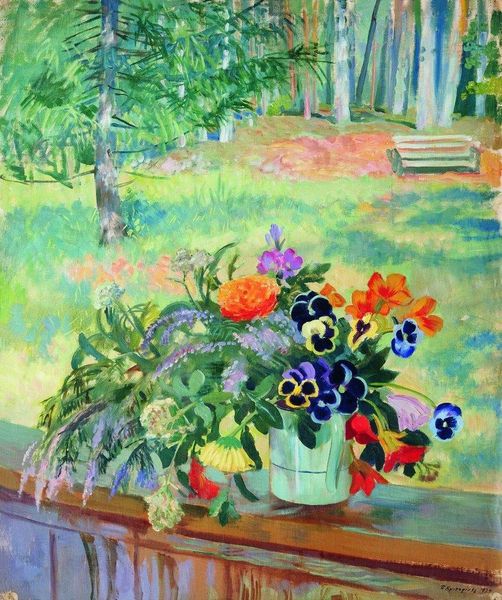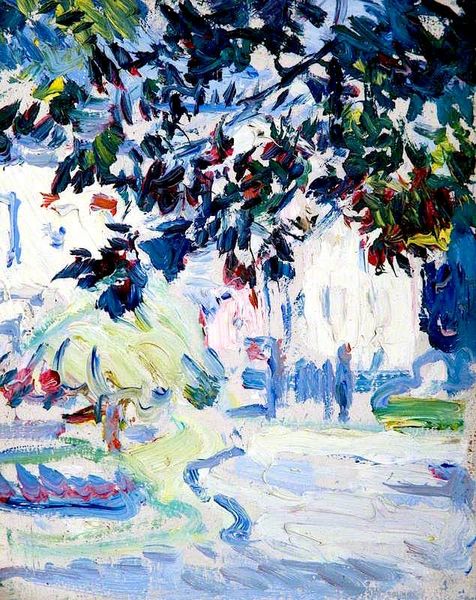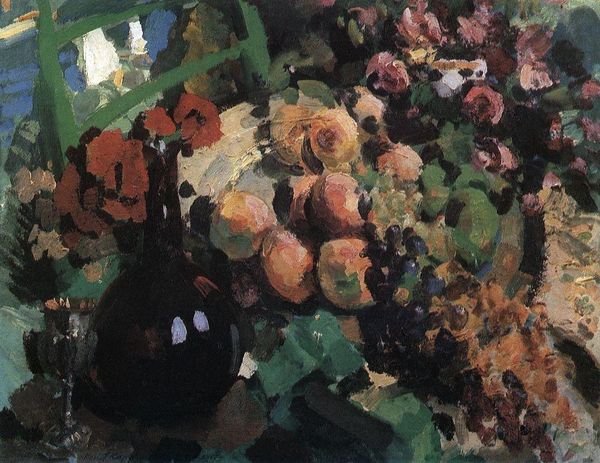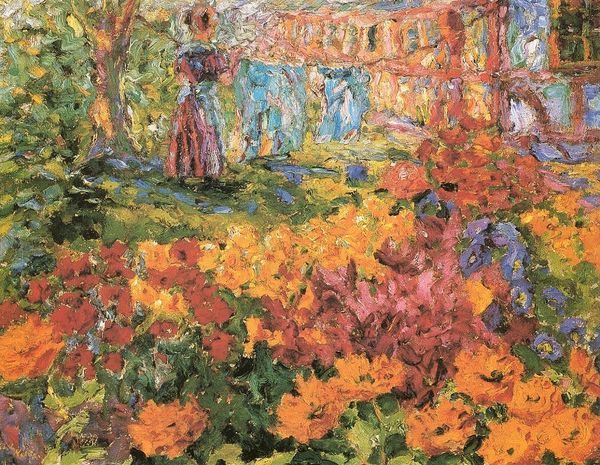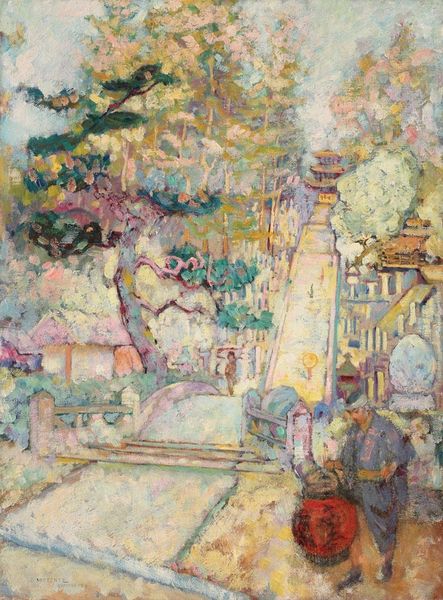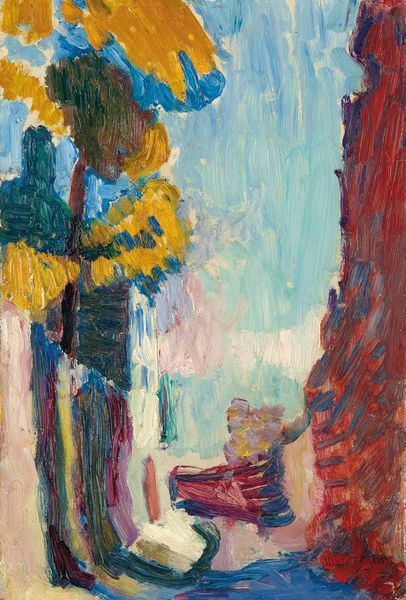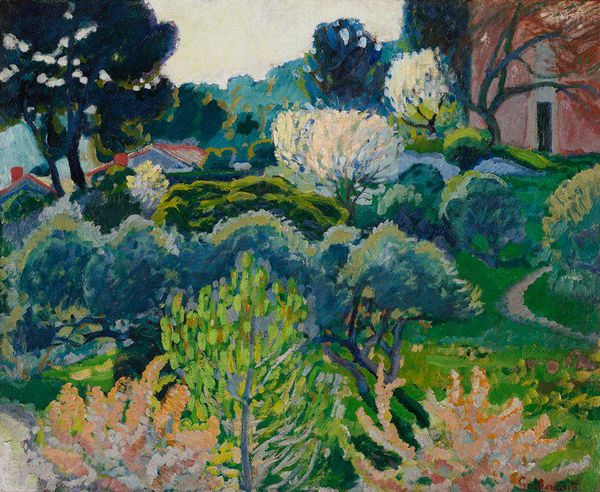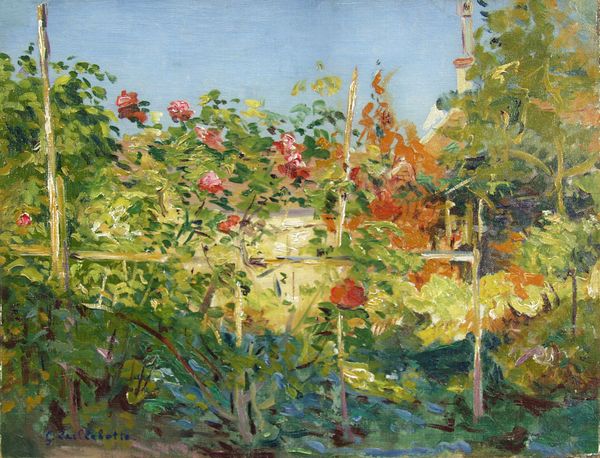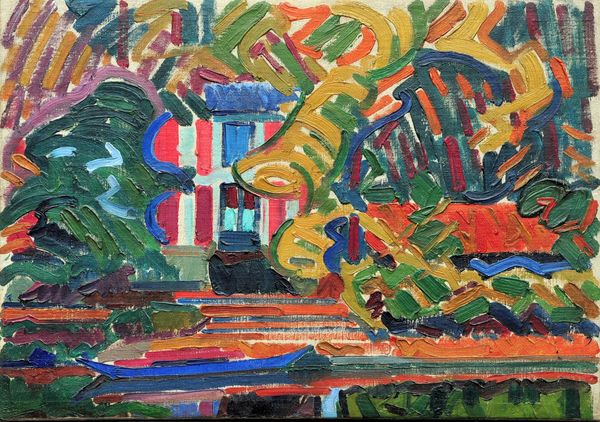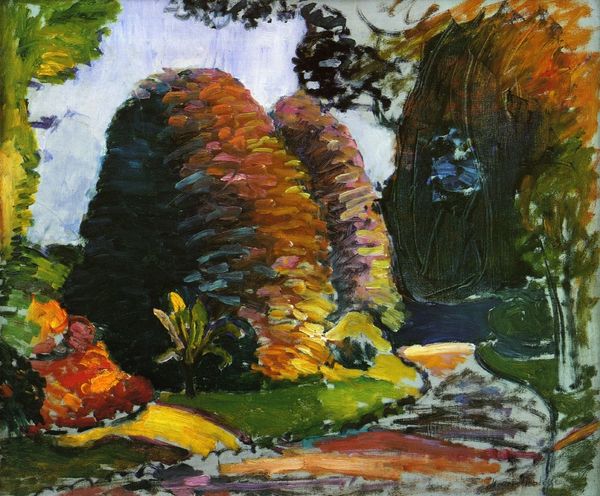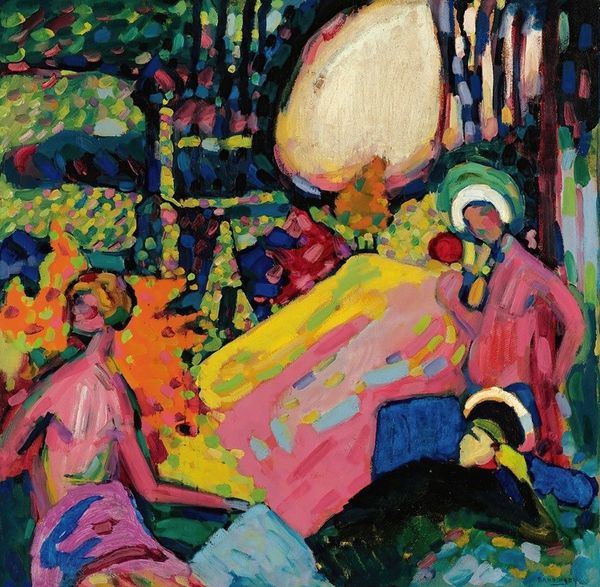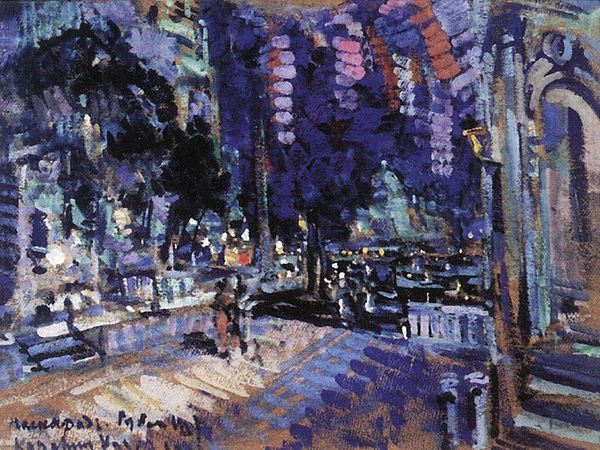
Copyright: Public domain US
Editor: Oh, wow. Talk about a symphony of chaos! All those colours just thrown onto the canvas, you know? I find it invigorating, actually, a little unruly, maybe. Curator: It certainly is energetic. We're looking at "Bauerngarten," which translates to "Farmer's Garden," painted in 1918 by the Swiss artist Cuno Amiet. The medium is oil on canvas and it's a fantastic example of post-impressionist, even expressionist, landscape painting. It almost feels Fauvist in its liberation of colour from form. Editor: Liberation is right! I can almost smell the earth, the flowers pushing their way up to the light...it feels less like observation and more like a joyful rebellion, don't you think? Look how that seemingly innocent pink fence is actually screaming! Curator: I appreciate that reading. If we consider that this work was created during the final year of the First World War, it's tempting to see that joyful exuberance as a deliberate counterpoint to the trauma and upheaval of the time. It could represent a yearning for the simple beauty of the natural world, a refuge from societal breakdown. Editor: Totally. And even though it's all a bit wild, I see real intention in Amiet's choices. The way he layers colours creates depth without needing strict lines or perfect shapes. And did the colours feel muted to you? Curator: Well, if you examine his use of color closely, you can tell it draws significantly from post-impressionist styles which saw artists turning away from naturalistic representation, experimenting with the expressive potential of form and hue to convey emotional states and inner visions, breaking with academic traditions of color theory and perspective. This canvas embodies the key tenets of those movements. Editor: Yes, you have to abandon the pursuit of realistic representations. It's like the flowers and bushes, the essence of them rather than trying to make something pretty or cute. What an explosion. Curator: Exactly! So when we examine paintings like this from a contemporary perspective, we consider them as a bold testament to nature's life-affirming power amidst global instability. They help illustrate historical issues through art in an innovative and informative way. Editor: Right. When I let myself go into the mood, I can't help feeling something about being connected to all the energy that the world has in store. Well put.
Comments
No comments
Be the first to comment and join the conversation on the ultimate creative platform.
